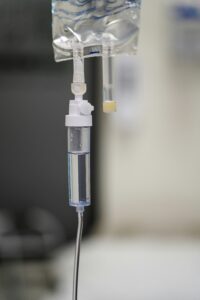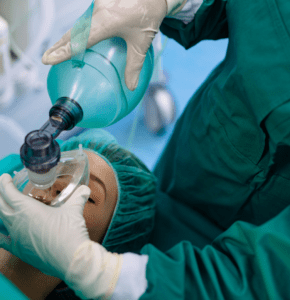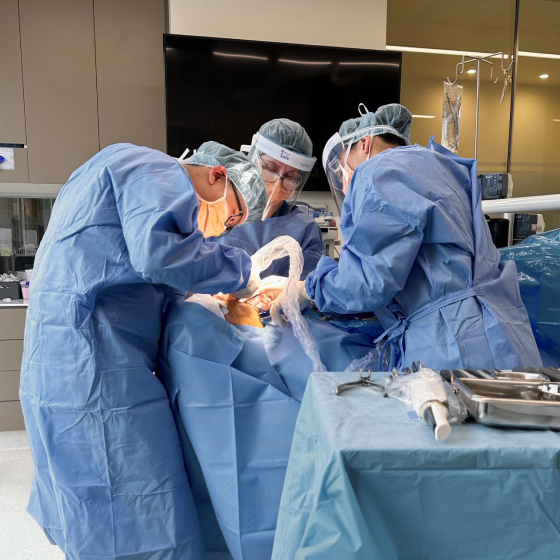IV Sedation vs General Anaesthesia Dentistry
When it comes to dental procedures, fear and anxiety are common barriers that prevent many people from seeking the necessary care. To address this, advancements in sedation dentistry have provided patients with options to help them feel relaxed and comfortable during dental treatments.
Two popular methods of sedation are IV sedation and general anaesthesia. While they both aim to alleviate anxiety and discomfort, there are distinct differences between the two.
In this article, we will explore the contrasts and benefits of IV sedation versus general anaesthesia, helping you make an informed decision about which option may be suitable for your dental needs.
IV Sedation

Administering IV Sedation
IV sedation involves the intravenous administration of sedative medications directly into your bloodstream. This delivery method allows the sedative to take effect quickly, inducing a relaxed state during your procedure. During IV sedation, your dentist can closely monitor and adjust the dosage as needed, ensuring optimal comfort throughout the procedure.
Benefits of IV Sedation
IV sedation offers several benefits that make it an attractive option for patients who experience dental anxiety or require lengthy procedures.
- It allows for a higher level of sedation compared to other methods such as oral or inhaled sedatives. This heightened level of sedation promotes deep relaxation and reduces your awareness during the dental procedure.
- Due to its administration directly into the bloodstream, IV sedation takes effect quickly, which can help reduce overall treatment times.
- The recovery time after IV sedation is relatively quick, which means you can return home shortly after your treatment.
- It allows you to remain conscious and responsive, minimising the risks associated with general anaesthesia.
Safety Considerations for IV Sedation
While IV sedation is generally safe, certain patients may not be suitable candidates. Patients with known benzodiazepine allergies, obesity, pregnancy, or central nervous system depression may be advised against IV sedation. It is crucial to consult with your dental practitioner to determine if IV sedation is the right choice for you.
General Anaesthesia

Administering General Anaesthesia
General anaesthesia involves the use of a combination of inhaled gases and intravenous medications to induce a state of complete unconsciousness. This method is typically reserved for complex or lengthy dental procedures and can only be administered by a specialised anaesthesiologist in a hospital setting or specialised sleep dentistry clinic like the Melbourne Dental Implant & Sleep Centre.
During general anaesthesia, you will be completely unconscious which allows for a totally pain-free and uninterrupted dental treatment.
Appropriate Situations for General Anaesthesia
While the popularity of IV sedation has reduced the need for general anaesthesia in dentistry, there are specific instances where it may be recommended.
- Patients with a high tolerance for the medications used in IV sedation may require general anaesthesia for dental procedures where sedation would typically be used.
- Patients with severe anxiety who are unable to cooperate even when sedated may benefit from general anaesthesia.
- For complex oral surgeries or the extraction of impacted or deeply rooted wisdom teeth, general anaesthesia may be the preferred option.
Safety Considerations for General Anaesthesia
General anaesthesia carries some inherent risks, and not all patients may be suitable candidates, including people with diabetes, a history of seizures, or regular smokers. It is essential to discuss your medical history and any concerns with your dental professional to determine the most appropriate sedation option for your specific needs.
Comparing IV Sedation and General Anaesthesia
Speed of Onset and Recovery
One notable difference between IV sedation and general anaesthesia is the speed of onset and recovery.
IV sedation acts quickly, allowing the dental procedure to commence promptly. The recovery time after IV sedation is generally shorter compared to general anaesthesia, with patients often able to go home shortly after their treatment.
On the other hand, general anaesthesia induces a state of complete unconsciousness, resulting in a slower recovery period. Patients are typically kept under observation in a hospital or clinic setting until the effects of the anaesthesia wear off.
Level of Sedation
IV sedation provides a higher level of sedation compared to other methods such as oral or inhaled sedatives. This can be particularly beneficial for patients with severe dental anxiety or those undergoing lengthy or complex procedures.
General anaesthesia, on the other hand, renders patients completely unconscious, eliminating any awareness or sensation during the dental treatment.
Memory and Awareness
IV sedation may result in partial or complete memory loss of the dental procedure. While patients remain conscious and can respond to external stimuli, they may not recall the details of the treatment. This amnesic effect can be advantageous for individuals who have had traumatic dental experiences in the past.
In contrast, general anaesthesia induces a state of complete unconsciousness, resulting in no memory or awareness of the procedure.
Patient Cooperation and Consciousness
IV sedation allows patients to remain conscious and responsive during the dental procedure. This conscious state provides a level of reassurance and enables effective communication between the patient and dental practitioner.
Meanwhile, general anaesthesia renders patients completely unconscious, eliminating the need for patient cooperation during the procedure.
IV Sedation vs General Anaesthesia: Which is right for you?

IV sedation and general anaesthesia are two distinct methods used in sedation dentistry to alleviate anxiety and discomfort during dental procedures.
IV sedation offers a higher level of sedation, rapid onset, and shorter recovery time, making it suitable for a wide range of dental treatments. On the other hand, general anaesthesia is reserved for complex procedures or individuals with severe anxiety who may not respond adequately to other sedation methods.
Both options have their merits and considerations, and it is essential to consult with your dental professional to determine the most appropriate sedation choice for your specific needs.
To find out more about our pain-free dentistry options, contact our friendly team at the Melbourne Dental Implant & Sleep Centre today. Rest assured, with the advancements in sedation dentistry, you can now undergo dental treatment comfortably and confidently, achieving optimal oral health and overall well-being.

